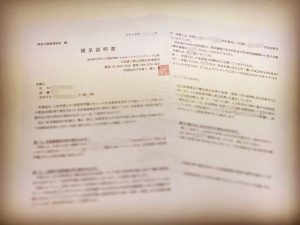コンテンツ
- Organised about Nikkei
- On ‘persons born as children of Japanese nationals’
- Persons with the status of a Japanese child (second generation of Japanese descent)
- (A) If the status of residence corresponds to that of “spouse or child of a Japanese national”:
- (B) If they fall under the status of ‘Long-Term Resident’:
- Regardless of whether the child is a legitimate or illegitimate child. Adopted children are NO. Special adopted children are YES.
- Any place of birth
- History of the Nikkei
- What is our service ?
Organised about Nikkei
Determining what generation of Nikkei an applicant is not sufficient to apply for status of residence. Several statuses of residence can be envisaged even for second-generation Nikkei, as follows. Which one do you fit? For more information, please contact the YOKOYAMA LEGAL SERVICE OFFICE.
- Second-generation Nikkei: “Spouse or Child of Japanese National”, “Long-Term Resident (Notification No. 3)”, “Long-Term Resident (Notification No. 6-a)”.
- Third-generation Nikkei: “Long-Term Resident (Notification No. 3)”, “Long-Term Resident (Notification No. 4)”.
- Fourth-generation Nikkei: “Long-Term Resident (Notification No. 6-c)”, “Designated Activities (Notification No. 43)”.
Those who emigrated overseas are called First-generation Nikkei. The biological children of a first-generation Nikkei are second-generation Nikkei, while the biological children of first-generation Nikkei who emigrated overseas are third-generation Nikkei.
It is important to note that, from the applicant’s perspective, the key point is whether or not the grandparents have renounced their Japanese nationality, or the nationality of the grandparents at the time of the parents’ birth, which is also to be ascertained.
In some cases, the grandparents, in the eyes of the applicant, were first-generation Japanese descendants who emigrated abroad and were Japanese nationals who had not renounced their Japanese nationality during their lifetime. The applicant may have been a Japanese citizen throughout his or her life.
Secondly, there are cases where the applicant’s grandparents were first-generation Nikkei who emigrated abroad and renounced their Japanese nationality before their death (i.e. former Japanese nationals), but the second-generation Nikkei who are the applicant’s parents were their biological children born “before” the renunciation of Japanese nationality.
Furthermore, there are also cases where an overseas immigrant renounced Japanese nationality locally and subsequently had a biological child born to the overseas immigrant as a parent. In other words, even if the applicant’s grandparents are former Japanese nationals who emigrated overseas (first-generation Nikkei, Japanese descent), they are still regarded as “Japanese children” and not as “Japanese”.
Note that the order of the above multiple cases (how they are counted) is one step off from each other. Simply because you are a third-generation Nikkei, it does not determine what your status of residence is.
On ‘persons born as children of Japanese nationals’
In legal terms, it is most important to clearly understand the definition of ‘a person born as a child of a Japanese national’. The expression “a person born as a child of a Japanese national” should be looked at carefully. It is easy to think of “(1) those born to overseas immigrants (Japanese) as parents”, but “(2) those who emigrated overseas and renounced their Japanese nationality (former Japanese)” also fall under the category of “those born as the children of Japanese”. The grandchildren of Japanese nationals who remained in China also fall under this category. Their parents, children of Japanese nationals remaining in China, are usually “children of Japanese nationals” and therefore fall under the category of “spouse, etc. of Japanese nationals”.
Persons with the status of a Japanese child (second generation of Japanese descent)
They fall into the following two types;
(A) If the status of residence corresponds to that of “spouse or child of a Japanese national”:
If either the father or mother was a Japanese citizen at the time of the child’s birth (even if the father or mother is now a foreign citizen.) The child can be said to have been “born as a Japanese child”. Specifically, this applies in the following cases
- If either the father or mother was a Japanese citizen at the time of the child’s birth.
- If the father died before the person’s birth and the father was a Japanese citizen at the time of his death.
In fact, in the case of such persons, they are persons who can acquire Japanese nationality under the provisions of the Japanese Nationality Law. Even if the father or mother renounced Japanese nationality after the person’s birth, this does not affect the fact that the person was born as a Japanese child and therefore falls under the category of “Spouse or Child of a Japanese national”.
(B) If they fall under the status of ‘Long-Term Resident’:
If neither the father nor the mother had Japanese nationality at the time of the child’s birth, the child cannot be said to have been “born as a Japanese child” and therefore does not qualify for “spouse or child of a Japanese national” status of residence. Specifically, this applies to the following two cases;
- A Japanese child (second-generation Japanese descendant) born to a Japanese immigrant (whose parents are Japanese nationals) who renounced Japanese nationality in the destination country due to international marriage, etc., and who was subsequently born to a former Japanese parent, is classified as a “Long-Term Resident” (Notification No. 3) and does not qualify as a “spouse or child of a Japanese national”.
- This type of person cannot strictly be called a second-generation Nikkei, as their roots are not in Japan. Even if the applicant’s father or mother acquired Japanese nationality after the applicant’s own birth, this does not make the foreigner concerned a “person born as a child of a Japanese national”. In other words, even if a foreigner acquires Japanese nationality through an application for permission for naturalisation, a child born before naturalisation does not fall under the category of ‘spouse, etc. of a Japanese national’. If the child is a minor, unmarried biological child, he or she falls under the status of residence “Long-Term Resident” (Notification No. 6 -a). Adult biological children do not have the relevant status of residence; they should apply for a working visa.
Regardless of whether the child is a legitimate or illegitimate child. Adopted children are NO. Special adopted children are YES.
Japanese biological children specifically include legitimate children as well as recognised illegitimate children. Adopted children are not included, but special adopted children are.
Special adoptions are only special adoptions under (Japanese law) Article 817 of the Civil Code. Similar systems under the laws of countries other than Japan are not covered.
Any place of birth
‘Persons born as a child of a Japanese national’ includes those born abroad, as there is no requirement that the child be ‘born in Japan’.
History of the Nikkei
In the 19th century, white rule originally led to the management of large-scale plantations growing sugar and cotton in South America, but the plantations’ labour force, the slaves, were no longer available due to the abolition of slavery. This led to an influx of Chinese labourers, and shortly afterwards Japanese immigrants crossed the sea to join them.
The history of Japanese immigration is said to have begun in 1899 when the ‘Sakura Maru’ left the port of Yokohama for Peru with 790 Japanese on board. Japanese immigration increased in the 1920s and 1930s, and Peru now has around 100,000 people of Japanese descent.
In the case of Brazil, the ‘Kasatomaru’ set sail for Brazil in 1908. Brazil produced even more emigrants than Peru. After the Great Kanto Earthquake, the Japanese Government subsidised emigration to South America, and after the Pacific War, many gave up on a burnt-out Japan and headed for Brazil. Many of the immigrants at that time were from Okinawa in particular, which is why many of the Japanese-Brazilians in Japan today are of Okinawan descent.
History goes back as far as the recent past: in 1989, during Japan’s bubble economy, the government changed its policy and amended the Immigration Control Act in 1990, creating a new system to grant permanent resident status to second and third generation Nikkei and their spouses.
Although this visa status was created for people whose roots are in Japan, the reality was that during the boom years of the bubble economy, Japanese people began to refuse to engage in so-called 3K (hard, dirty and dangerous) physical labour and wanted a workforce that could work at such sites.
Brazil, in particular, where many Nikkei lived, was suffering from hyperinflation at the time and the economy was in turmoil. The ability to work and live in Japan for up to the third generation of Nikkei encourages the descendants of Nikkei to consider going to Japan to work. With “Long-Term Resident” status, there are no restrictions on work, including simple labour. In particular, many descendants of Nikkei immigrants have come to Japan as dekasegi workers in Aichi, Shizuoka and Gunma prefectures, where the automobile and other manufacturing industries are thriving, with “Long-Term Resident” status. The number of Brazilians living in Japan increases rapidly as follows.
| Year (e.g. AD) | Number of Brazilians in Japan |
| 1986 | 2135 people |
| 1991 (one year after the amended Immigration Act) | Approx 120,000 people |
| 2007 | Approx 317,000 people |
Later, with the collapse of Lehman Brothers, the manufacturing industry was hit hard and many of the Nikkei who worked there lost their jobs. The government then launched the ‘Return Assistance Programme for Leaving Nikkei’ in 2009. In exchange for a 300,000 yen grant to Nikkei returning to Japan, they were required to promise not to re-enter Japan. However, from 15 October 2013, those who fulfil certain conditions (in cases where the cost of their stay is covered by employment, they must have an employment contract with an employment period of at least one year) will be allowed to enter Japan.
Thus, although technical apprentices are now accused of being disposable or being used as an employment regulator, in the past, the role was filled by people of Japanese descent from South America, with ‘Long-Term Residents’, and was fully regulated by the government through policies to open and close borders in response to changes in the economy and the situation It can be seen that the Although the appearance of the system has changed in many ways, the essence of the system may not have changed in any way, as Japan has merely created policies to keep an eye on economic trends and to seek a usable foreign workforce.
What is our service ?
Our office makes them one by one according to each situation.
- services available in English or Chinese,
- provides professional assessment and consultation services according to your personal situation,
- review and organize your documents according to the laws and policies of the immigration of Japan,
- prepare all necessary application documents, attachments and filing lists for you,
- submitting your application to immigration offices throughout Japan (you do not need to be present),
- respond to all inquiries and reports from the Immigration Bureau in the name of the immigration lawyer,
- keep you updated on the progress of your application,
- pick up your Residence Card or COE (Certificate of Eligibility) and return it to you,
- assist you in applying for permanent residence in Japan (green card), if you have lived in Japan continuously for a certain number of years.

Our office has a lot of practical experience. Our Gyoseishoshi lawyer will listen to your situation and advise you on the best way to proceed, as well as creating individualised application forms and justifications. None of the documents are the same.
Other Question?
Please feel free to contact us for advice!
First, please call +81-3-6264-9388 or leave a message on our website with your inquiry. (Please contact us by phone or consultation page.)
TEL: +81-3-6264-9388
WeChat: visa_hengshan
Line ID: visa_yokoyama
Email: info@lawoffice-yokoyama.com

![JAPAN VISA [YOKOYAMA LEGAL SERVICE OFFICE]](https://lawoffice-yokoyama.com/wp/wp-content/uploads/2014/10/logo_024.png)


